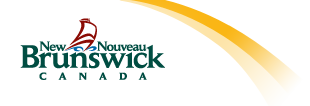The departments of Health, Environment and Local Government, and Tourism, Heritage and Culture are currently collaborating on a working group. The long-term aim of the group is to identify both the point and non-point sources of bacteria throughout the Shediac Bay Watershed.
In the short term, the provincial and federal governments are investing more than $2.6 million in strategic infrastructure and studies to support water quality improvements at Parlee Beach.
The projects below highlight the activities that will be undertaken as part of this work:
Rain gauge installation and near real-time data capture
It is well known that bacterial loading to surface water correlates well with rainfall intensity and other weather-related parameters such as wind direction and amount of sunlight. During rainfall events, the land is flushed due to precipitation runoff. An initial scoping of the type and location of weather data has already been started by the Hydrology Centre. Contact will also be made with the Shediac Bay Watershed Association and others to ensure all available data is compiled. A weather station (rain gauge, wind speed and wind direction) for the Parlee Beach area will be installed and automated to make data available in near real-time.
Timeline: Completed.
Coastal hydrodynamic modelling
It will be important to establish the influence of tides and currents, coupled with an understanding of prevailing winds, on water movement in the Shediac Bay area because bacteria can move through the environment away from their initial source. This will help better understand and locate the sources of bacteria in the beach area. A short study was done in 1999 – this project will update and expand on this previous work.
Timeline: Completed.
Beach sand bacteria and shallow groundwater flow paths
Bacteria are not only known to exist in the shallow beach water environment, they can also be found in the pore water beneath the sand. No existing information on this possible mode of occurrence has been studied in the past at Parlee Beach. As an example, such a study may lead to indications of possible bacteria sources flowing through shallow groundwater versus bacteria from point source discharges directly into the bay.
Timeline: Completed.
Historical bacteriological data consolidation and testing of bacterial count procedures
Data will be assembled from various sources of historical water quality results. Possible sources include: Environment Canada, Shediac Bay Watershed Association, small town and rural development reports, provincial monitoring data, and results of any environmental assessments of watersheds that may have been completed. Once accumulated, the data will be provided to the Department of Environmental and Local Government for import into their existing database.
Various pilot studies will be conducted to test and validate a bacterial monitoring method that may be able to provide faster bacteriological results. The results will be cross-correlated to established recreational water sampling protocols. The information will be provided to the Department of Health and the Department of Environment and Local Government in a report with accompanying data and plots.
Timeline: Completed.
Cumulative effects assessment and protocols development
It is important to understand the possible cumulative immediate and long-term environmental effects of continued development in the Shediac/Parlee Beach area. Individual projects that require an Environmental Impact Assessment generally cover the possible environmental effects of that one project. This project will aim to advance answers to the following questions: What are the standard protocols to follow in situations where it is important to predict future cumulative development and possible environment effects? What is the future capacity of the municipal waste water effluent infrastructure? How are local planning bylaws linked into possible cumulative environmental effects within the Shediac Bay Watershed?
Timeline: Completed – in review process.
Watershed reconnaissance survey and water sampling program
This is a combined survey of visual observations and water sampling in order to locate point and non-point sources of bacteria in the Shediac Bay Watershed. An initial map compilation and review of possible sources (effluent pipe locations, farms including animals and manure storage, septic systems, etc.) will be conducted. Water sampling will be carried out between May and November 2017. As sample results come in, possible sources can be located and remedial action taken throughout the timeframe of the entire project. There is no need to wait for project completion to take action.
Timeline: Completed.
Best practices for beach management
This project will aim to advance answers to the following questions: What is the best time of year and under what conditions is it appropriate to move sand back onto the beach to regenerate coastal erosion? Are there best management practices available for seaweed removal? This project will mostly consist of literature research and compiling best management practices and available protocols. Part of this project requires knowledge of the possible bacteria load in the sand that is to be moved.
Timeline: Completed.
Various other tasks that contribute to the overall project administration
- Septic system survey/mapping – Completed
- Greater Shediac Sewage Commission infrastructure assessment – Completed
- Parlee Beach infrastructure assessment –Completed
- Extend UV disinfection of Greater Shediac Sewage Commission effluent to year-round – Completed
- Examine linkages to coastal flood mapping and previous geomorphology studies – Completed
- Compile summary of previous work done in the 1990s – Completed
- Educational campaign regarding boating practices and sewage loading – Completed (to resume for the 2018 season)
- Literature review on bather density – Completed
- Engage a specialist in microbiology to help with lab and field planning and interpretation of bacteria data – Completed
- Identify areas for possible federal/provincial partnerships – Ongoing
- Identify all variables to enable a consistent provincial approach to managing recreational waters – In progress
Timeline: End of 2017
